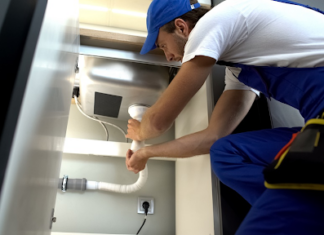What Is A Classic Boat?
Just as classic cars that have been restored command a lot of attention and admiration, vintage or classic boats are timeless vessels. Classic boats are more than just a means of transport, they have to their owner and the greater boat community a sentimental and historical value. Sure, these boats are beautiful to look at and in some cases are still functional, but their real essence is the mystery of the ages held within the starboard and the port.
Classic boats were often believed to be wooden only but fiberglass designs have aged well enough to be considered among the classic boat fraternity. A boat built between 1943 and 1975 is classified as a classic boat, with boats made past the year 1976 to the years 25 before the current year are also generally referred to as late Classic boats. Wooden boats built within the last 25 years are known as contemporary.
The Purpose Of Cotter Pins
Cotter pins are very versatile and have a wide range of possible uses that make them indispensable for boat rigging. Cotter pins are metallic wedges or pins used to fasten any two mechanisms together. They work by being split open after being passed through a hole. The metal fastener with two tines that are bent during installation and used to fasten metal together, like with a staple, or rivet. For boating and sailing and general marine use, silicon bronze and higher quality materials are used. Bronze is favored for use for traditional boat fittings and parts because it can be cast, machined, and polished easily.
Why Silicon Bronze Cotter Pins Are Suitable For Your Classic Boat Rigging
Only the highest quality fittings should be used on a classic boat rig. Silicon bronze cotter pins offer marine-grade quality. On classic boats, silicon bronze pins are a reliable and durable way of fastening rigs, cables, and fittings together. The alloy of silicon and bronze:
- Makes the pins incredibly resistant to saltwater and will hold turnbuckles, your props, clevis pins, and other various fittings securely for years to come as silicon adds corrosion resistance.
- Friction reduction due to alloy smoothening.
- Minimal clearance requirements.
- Non-magnetic properties.
Bronze’s malleability makes the pins have a high-quality finish. Bronze can bend more than one time. This makes removing and replacing pin joints is easy and affordable, as individual pins can be reused multiple times. Cotter pins are simple to use and require nothing more than a bolt with a hole in it, no bolt fasteners are needed.
To install a cotter pin:
- Attach the castle nut to the bolt and screw it in place.
- Mark the bolt or leave the castle pin installed
- Using a drill and bit drill a hole at the point marked through the cross-section of the bolt. An option; you can make a starting point by using a metal punch.
- Remove any remaining metal fillings from the hole to allow insertion of the cotter.
- Using pliers, bend the ends of the locking pin away from each other to prevent the pin from coming out the back of the hole.








